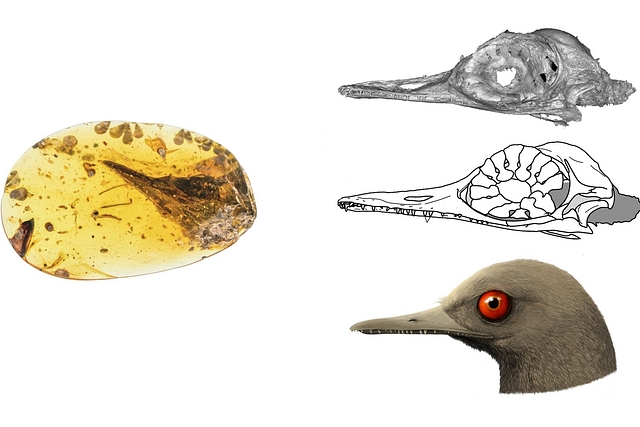
This Discovery Of The Smallest Dinosaur Also Reconfirms Some Facts Of Early Geography
The discovery of this tiny ‘dinosaur’ gives more information than just relating to ancient organisms.
In northern Myanmar, trapped inside approximately a 99-million-year-old amber, are the remains of a humming bird-like creature. More specifically, its skeletal parts.
For scientists, 'the find appears to represent the smallest known dinosaur of the Mesozoic era, rivalling the bee hummingbird ... the smallest living bird—in size.'
With quite a large eye socket along with overlapping membrane bones surrounding the eye cornea, form of the remains suggests a resemblance to lizards.
The overlapping membrane bones, embedded in what surrounds the cornea, are called scleral ossicles.
In this bird-lizard like creature, we find them conically arranged.
This arrangement made the pupil of the animal small. This is a typical adaptation for the eye to operate in bright light.
This means the humming bird-sized bird-lizard operated in sun light. According to a paper published in ‘Nature’, this creature was diurnal (operating in daytime).
Scientists have named this organism as Oculudentavis khaungraae.
‘Oculudentavis’ means eye-tooth bird.
The upper jaw of the animal shows 40 sharp teeth. The unusually large eyes along with the teeth show that the animal was probably predatory.
Perhaps it swarmed in on the prey?
Perhaps it formed social groups?
This is the stuff of films like Jurassic Park are made. But as we await further details from the study - including the rare preservation of the tongue of the animal- we can be sure that often the facts turn out to be stranger than fiction.
The total length of this ‘dinosaur’ is merely 1.5 cm and it weighed perhaps 2 grams.
'Miniaturization most commonly arises in isolated environments', point out the scientists associated with find. And hence, this throws light on the early ecological systems then existed 99 million years ago.
‘Isolated environments’ here essentially means islands.
Geo-scientists studying ancient continental drifts have put forth the view that Burma Terrane was part of the Trans-Tethyan arc when the Indian land mass collided with Asia.
Myanmar is today quite famous with palentologists for its rich 'Cretaceous amber biota' - organims trapped and their body parts preserved in ancient amber.
A paper published in 'Nature Geoscience' last year (October 2019) states that 'the Burma Terrane was part of a Trans-Tethyan island arc and stood at a near-equatorial southern latitude approximately 95 million years ago, suggesting island endemism for the Burmese amber biota.'
Endemism means a species becomes uniquely adapted to an isolated terrain, like islands.
A good example of this are 15 species which are now famous as the 'Darwin's finches', which the great biologist studied in Galapago islands in the study which helped Darwin discover natural selection.
Scientists think that 'the diminutive size of Oculudentavis is therefore consistent with previous suggestions that this amber formed on an island within the Trans-Tethyan arc.'
So, this dinosaur could have been part of an island ecosystem.
Hitherto unseen, such a body plan for a bird-lizard with sharp teeth and unusually large eyes may suggest also ‘a previously undetected ecology’ and the lowest limits to which the body size could be pushed in such an ecology, says the paper.
That this study has been made by a team mainly of Chinese scientists in the conflict-torn Northern Myanmar is also another aspect of the study. The question also arises as to why Indian scientists are not that much involved in such exploratory studies in neighboring countries.
(Journal reference: Lida Xiang et al, Hummingbird-sized dinosaur from the Cretaceous period of Myanmar, Nature volume 579, pages245–249(2020) )